The Holbrook Explorer

Back from the Field: Debbie Jordan’s Corcovado Adventure
Back from the Field: Debbie Jordan’s Corcovado Adventure
Debbie Jordan, Holbrook birding specialist and “ambassador,” recently returned from a 9-day adventure to the Osa Peninsula on the southwest of Costa Rica. She shared her story and vivid photos, and she vows to go back soon!
 Punta Marenco Beach
Punta Marenco Beach
Q: Can you describe this region of Costa Rica?
Debbie: Corcovado and the Osa Peninsula are affectionately known as the last frontier of Costa Rica, a pristine national park that is largely untouched by humans. There are no roads. There are some ranger stations there that you can only access by walking or by boat. And it’s just full of wildlife. There's an incredible diversity there. This was my 17th time to the country and there's still so much to explore. I'm in awe every time I go. There's just so much to see in this small little country.
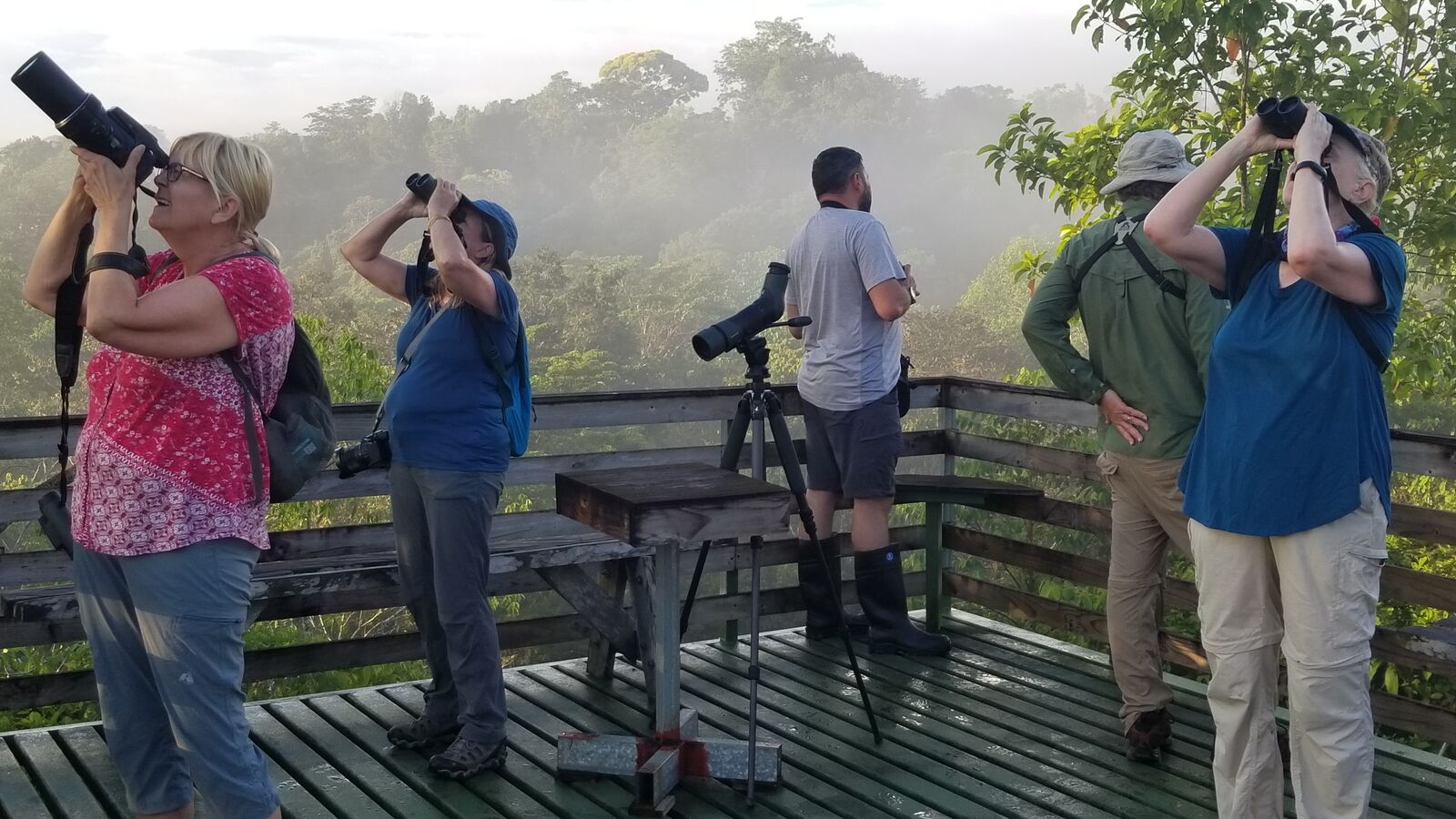 Tower at Danta Corcovado
Tower at Danta Corcovado
Q: What wildlife did your group hope to see when you were down there?
Debbie: We were very interested in seeing some of the endemics and near-endemics there, which include the Yellow-billed Cotinga and Mangrove Hummingbird. We pretty much got all of our target species on the trip. I think we saw just over 200 species in our 9-day program, which was very good, considering we were only in two locations.
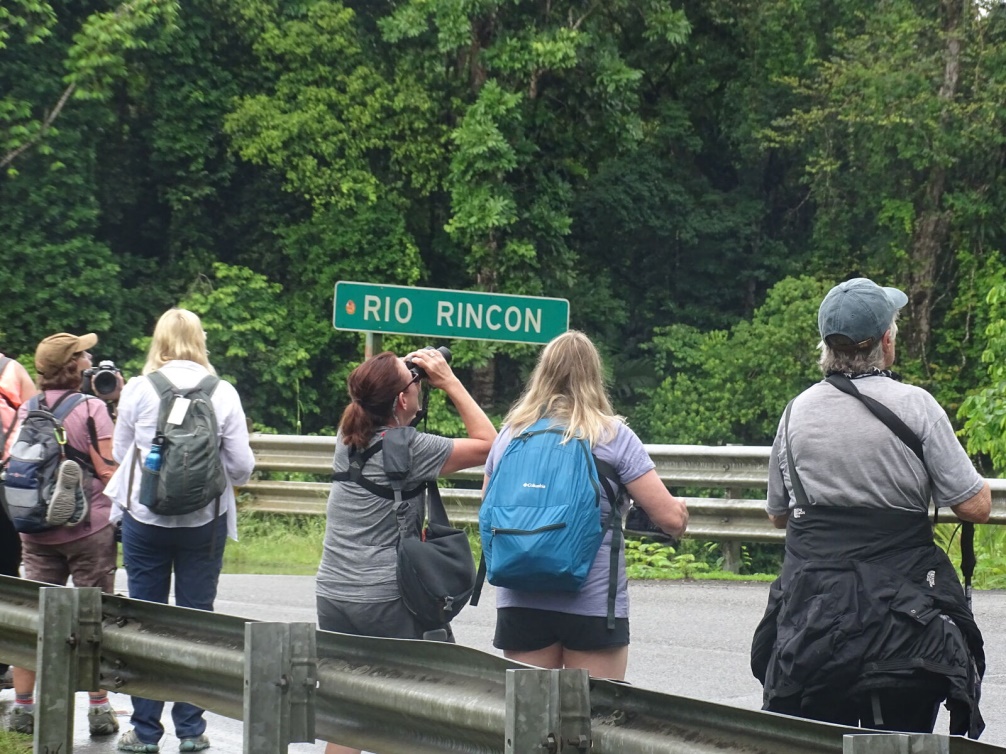 Looking for Yellow-billed Cotinga
Looking for Yellow-billed Cotinga
Q: Can you outline your itinerary?
Debbie: We first started out in San José and then flew in a small plane down to Drake Bay, a small town on the Osa Peninsula. We were picked up in 4x4s and took a 30-minute ride over to Punta Marenco Lodge, which overlooks the Pacific Ocean. The owners have a very strong conservation ethic and have actually created a private reserve, the Punta Río Claro Wildlife Refuge, adjacent to the national park. We spent three nights there and went on lots of adventures.
 Sunset at Punta Marenco Lodge
Sunset at Punta Marenco Lodge
Then we went over to the other side of Corcovado National Park, the east side, and stayed in a fabulous lodge by the name of Danta Corcovado. They are another great conservation story, with the owner also preserving land and creating an ecolodge that helps support it.
Q: What were some of the favorite excursions?
Debbie: We did a snorkeling trip out at Caño Island, which is about 45 minutes to an hour offshore. We had a really interesting day there, learning about the history of the island, seeing hawksbill turtles and all kinds of tropical fish. The water in the Pacific is crystal-clear and temperate and just beautiful in this part of the world. This is also an area where humpback whales migrate from the north and south to breed, and 12 months later they return to give birth in those same waters.
 Learning about Caño Island
Learning about Caño Island
 Wet landing at San Josecito beach
Wet landing at San Josecito beach
Another great excursion was to the Sirena Station in Corcovado National Park, an hour's boat trip down the coast. We saw spectacular scenery, beautiful beaches, and very rocky coasts. It's not the Caribbean, that's for sure. We got to see tapirs up close and saw lots of monkeys, along with other wildlife. It was amazing.
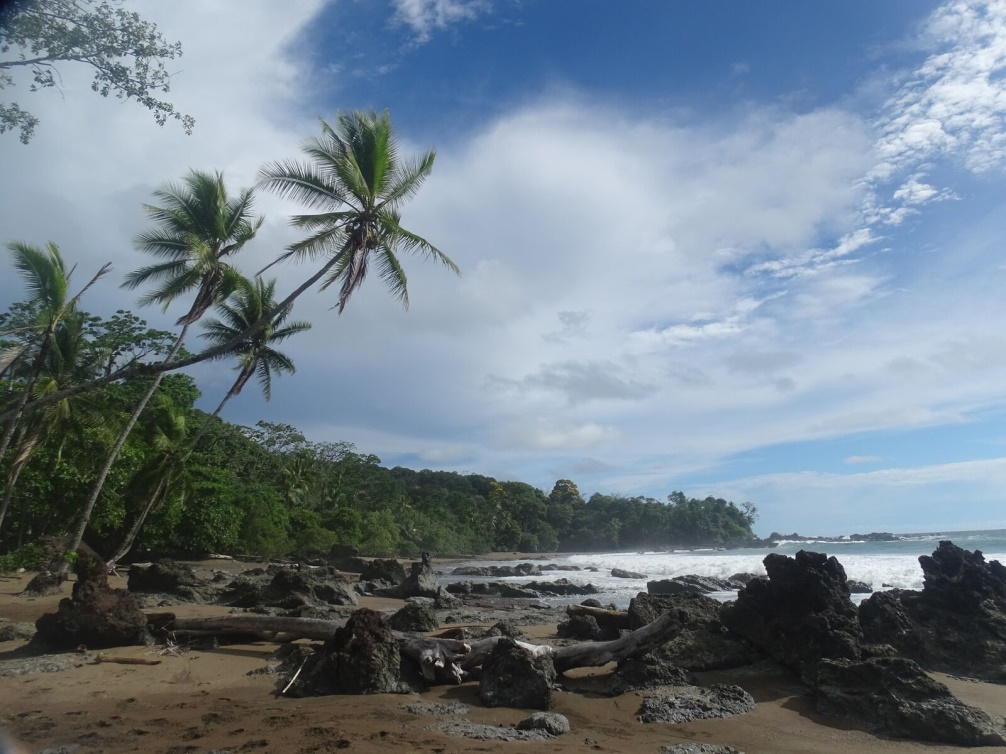 Beach at Punta Marenco
Beach at Punta Marenco
Q: What were some of the other highlights?
Debbie: There were a lot! One evening at Marenco Lodge, I heard Scarlet Macaws. They're very vocal birds. I heard the squawking, and I went out from my room barefoot to look for them. It was really special to finally find them eating the fruit off of the tree.
 Scarlet Macaws feeding at Punta Marenco
Scarlet Macaws feeding at Punta Marenco
We also saw a Red-capped Manakin at Marenco. That's a very interesting bird that they call the Michael Jackson bird, because it does a moonwalk in its courtship display. It also makes a sound with its wings that sounds like you're snapping your fingers. He's one of my favorite manakins.
 Red-capped Manakin
Red-capped Manakin
We saw tapirs at the Sirena Station area. That was another adventure; I think we walked five miles that day in 90-degree heat and what felt like 120% humidity. It was really hot! But it was worth it, because we got to see an endangered Baird's tapir cooling off in the mud. It was incredible to hear the tapir breathing. We were all just watching in amazement.
 Baird's tapir
Baird's tapir
The basilisk lizards are interesting. This is a brown basilisk. (They’re relatives of the green basilisks that we see at Selva Verde.) The way they hunt is they sit on a log and they'll see a moth land across the water, and then they run right across the top of the water and grab it. That was really fun to watch. They are so quick, it's very hard to get a photo of the crossing!
 Brown basilisk
Brown basilisk
We saw Brown Boobies off the coast on the way down to the Sirena Station. We went by an island where they were nesting. This one was on the way out to Caño Island hanging out on a piece of driftwood. The driftwood creates its own little habitat for fish and birds, and the boobies were just hanging out there eating fish.
 Brown Booby on driftwood
Brown Booby on driftwood
The Yellow-throated Toucans came into a tree just outside of my room, so I got to watch them interacting for probably 20 minutes. This time of year is really interesting because the birds are mating and nesting, and you can see them and see their behaviors.
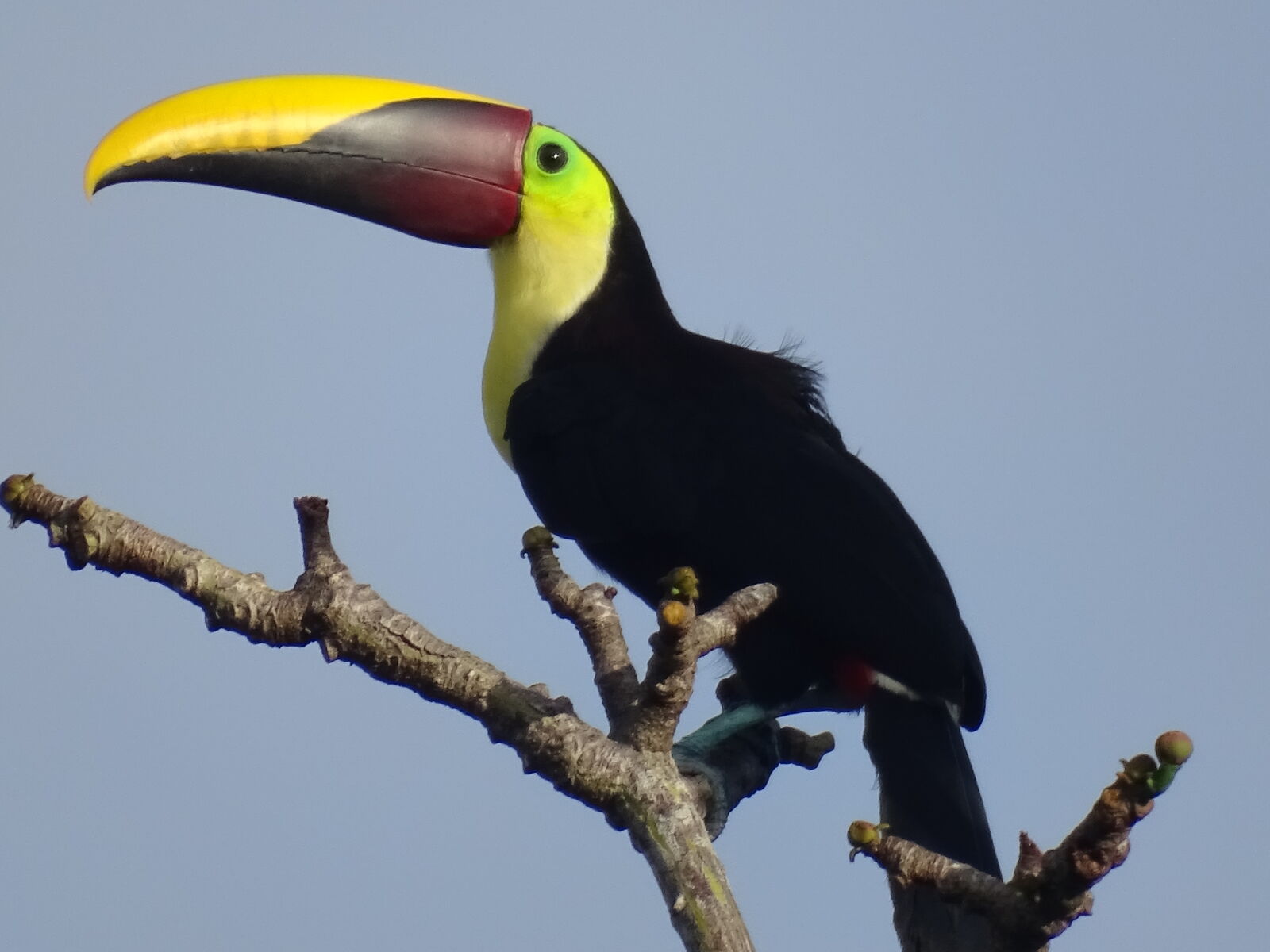 Yellow-throated Toucan
Yellow-throated Toucan
After we saw the Yellow-billed Cotingas from the bridge, we went on a boat excursion on the Rincón River. We saw the Mangrove Warbler and some other very cool species right from our boat. We saw a crab-eating raccoon, which I've never seen.
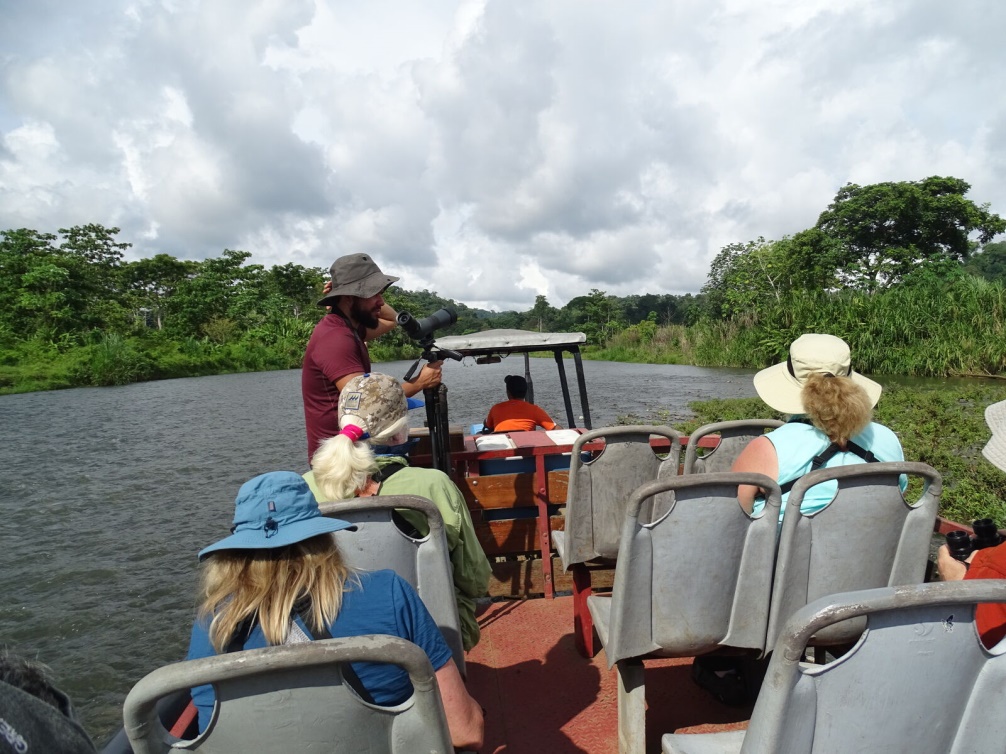 Crossing the Río Rincón by a tractor-drawn wagon
Crossing the Río Rincón by a tractor-drawn wagon
 Birding at La Tarde Wildlife Area
Birding at La Tarde Wildlife Area
We had a really wonderful group, all women except for our guide Mario Córdoba and one wonderful gentleman from Ohio, George. They were both so patient with all of us. It was a fabulous, fabulous dynamic. We traveled with the spirit of adventure, perfect for the rugged experiences of the Osa. There's lots of wet landings, so it’s a place that is not for everyone, but for people who are fit and can take the heat and humidity, it’s perfect for wildlife experiences!
 The group on the Caño Island observation deck
The group on the Caño Island observation deck
